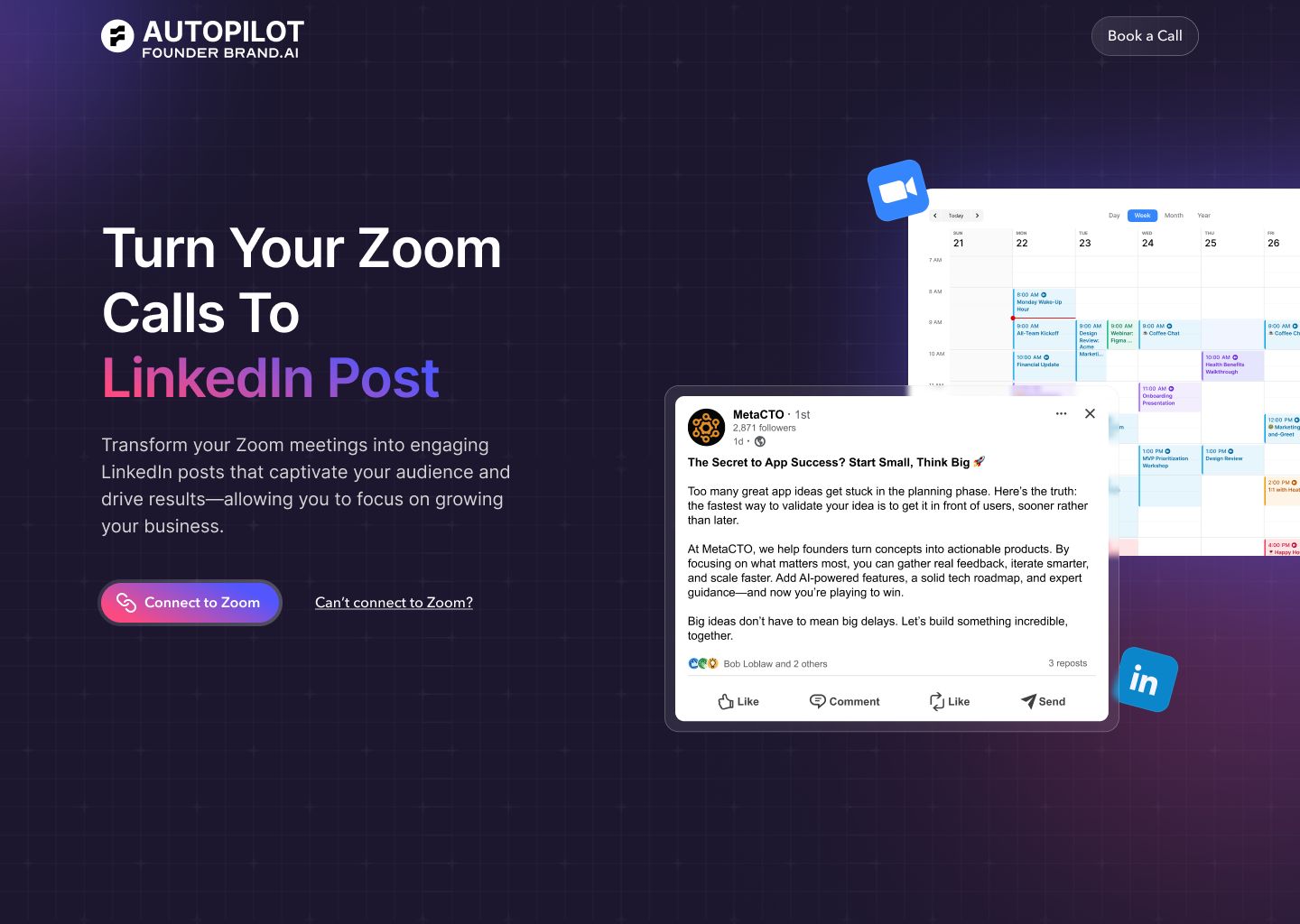Introduction
The promise of decentralization has captured the imagination of innovators worldwide. Ethereum, as a flexible and powerful platform, stands at the forefront of this revolution, enabling the creation of decentralized applications (dApps) that are reshaping industries from finance to gaming. However, the path from a groundbreaking dApp idea to a functional, secure, and scalable product is fraught with profound technical challenges that can overwhelm even seasoned development teams. Building on the blockchain is not like traditional software development; it’s a journey into a new paradigm with unique pitfalls and complexities.
This article serves as a comprehensive guide to the world of Ethereum app development. We will delve into what constitutes an Ethereum dApp, explore the extensive and often underestimated difficulties of in-house development, survey the diverse landscape of dApp types and use cases, and provide an estimate of the associated costs.
More importantly, we will discuss how to navigate this challenging terrain successfully. For over 20 years, we at MetaCTO have been at the cutting edge of technology, helping businesses design, build, and scale transformative mobile applications. As a top US AI-powered app development firm, we specialize in integrating complex backend systems like Ethereum into seamless mobile experiences. This guide will show you not only the what and why of Ethereum development but also the how—and how partnering with an expert firm like ours can be the critical factor that turns your visionary concept into a market-ready reality.
What is an Ethereum App?
An Ethereum application, more commonly known as a decentralized application or “dApp,” is a digital application that runs on a peer-to-peer network of computers rather than a single central server. Many of these dApps are built on the Ethereum platform, which provides a flexible foundation for their creation. The core logic of a dApp is governed by smart contracts—self-executing contracts with the terms of the agreement directly written into code. These contracts are deployed on the Ethereum blockchain, making them immutable and transparent.
The decentralized nature of these applications is their defining feature. Because the data and code are published to the blockchain, they are incredibly difficult to modify, which enhances security and trust. This structure eliminates the need for a traditional intermediary to manage transactions or enforce rules, as the network itself handles validation and execution through consensus.
A Prime Example: Uniswap
To make this concept more concrete, consider Uniswap, a highly successful decentralized exchange protocol built on Ethereum. Uniswap fundamentally changes how users trade digital assets.
- Peer-to-Peer Trading: It enables users to trade cryptocurrencies directly with each other without needing a middleman like a traditional bank or a centralized crypto exchange.
- Automated Smart Contracts: The protocol uses automated smart contracts to create “liquidity pools.” Users can contribute their tokens to these pools and, in return, earn fees. These pools provide the necessary liquidity to facilitate trades instantly.
- Seamless and Secure Experience: Users can trade tokens directly from their own digital wallets. This non-custodial approach means users never have to give up control of their private keys, providing a more secure trading experience.
The very existence of a platform like Uniswap is made possible by the decentralized architecture of Ethereum. It operates autonomously, 24/7, based on the code deployed to the blockchain, without a central company controlling the flow of funds or dictating the terms of trade. This is the power and promise of an Ethereum dApp.
Reasons It Is Difficult to Develop an Ethereum App In-House
While the concept of a dApp is powerful, the reality of building one is a formidable technical undertaking. The challenges are not minor hurdles; they are fundamental, deeply embedded issues that can stall projects, inflate budgets, and lead to catastrophic failures. Based on the hard-won experience of companies like BitGo, building enterprise-grade Ethereum infrastructure in-house is a journey fraught with peril.
Client and Node Instability
The first line of challenge is the very software used to connect to the Ethereum network. A development team’s interaction with the blockchain is mediated through a client, and the stability of this client is paramount.
BitGo’s early attempt to build a highly indexed database of the Ethereum blockchain using EthereumJ in 2016 was a poor decision. The client was not production quality, a fact later confirmed in conversations with Ethereum developers. The team experienced a host of problems:
- Multiple crashes and stalls.
- The client getting stuck or its data becoming corrupted many times.
- Subpar documentation and limited developer support from the small pool of EthereumJ experts.
- Frequent need to delete the entire chainstate and re-sync from scratch, a time-consuming and disruptive process.
Ultimately, BitGo never managed to stabilize their EthereumJ indexer to a point where they felt it was ready for production.
Even after switching to Parity, a more popular client, the problems didn’t disappear. While more robust than EthereumJ, Parity has not been foolproof. BitGo’s team has experienced a variety of unexplained crashes and stalls. Specific versions introduced new bugs, such as Parity 1.6.3 crashing with 'Can’t create handshake: Auth' errors. Parity 1.7.2 had issues with its initial sync in archive mode, causing it to blow out disk usage and crash regularly. The only workaround was a cron script to restart the node every hour. They also experienced a complete loss of all peer connectivity on a regular basis, causing their test environment to fall out of sync with the network, which could only be fixed by deleting a configuration file and restarting.
Fundamental Data Handling Challenges
One of the most insidious problems is handling Ethereum’s native 256-bit numbers. Most production-quality databases, the workhorses of modern application development, do not support storing 256-bit integers as a native numeric type that can be queried and manipulated.
- Database Limitations: Mongo, a popular NoSQL database, only supports 128-bit numbers. Worse, due to a limitation in Mongoose (a NodeJS driver for Mongo), the actual support for BitGo was effectively reduced to 32 bits.
- Concurrency Issues: A multithreaded indexing service, built for performance, needs to atomically increment and decrement account balances. Without native support for large numbers, a simple “get the value, modify it, and put it back” operation is not atomic. If two threads try to update the same account simultaneously, one update can overwrite the other, leading to data corruption.
- Workarounds Create New Problems: BitGo’s initial solution was to develop a custom data structure, the “BitGo BigInt,” which broke a 256-bit value into six separate database fields. However, they observed a loss of precision when performing math operations with this structure in MongoDB. The other option, storing the values as strings, solves the precision issue but introduces new limitations:
- You cannot perform numeric queries (e.g., “find all accounts with a balance greater than X”).
- You cannot atomically update values. The process of reading the string, converting it to a BigInteger in memory, modifying it, converting it back, and storing it must be single-threaded to prevent race conditions. This forced BitGo to single-thread their entire indexing service, crippling performance.
Extreme Infrastructure and Performance Demands
Running a full, archival Ethereum node is an infrastructure nightmare. An archival node must execute every smart contract ever performed in the history of Ethereum to build its state. This requires a tremendous amount of disk input/output (I/O).
- SSDs Are Mandatory: Attempting to sync an archival node on a machine with traditional spinning disk drives is a futile effort. The drive simply does not have enough I/O operations per second (IOPs) to keep up with the tip of the blockchain. Solid-state disks (SSDs) are an absolute requirement.
- High Costs: High-IOPs storage on virtualized cloud servers is not cheap. BitGo’s experience shows the direct correlation between IOPs and sync time:
- Syncing a node on a VPS with 2,000 IOPs took over 4 days to reach block 3.8 million (out of 4.3 million).
- Syncing on a VPS with 5,000 IOPs still took 8 days to reach block 4.3 million.
- Ever-Increasing Difficulty: As the Ethereum network grows and transaction volume increases, blocks become harder and slower to verify. BitGo noted that it took over 4 minutes to verify certain blocks, during which the machine’s disk was pegged at a constant 50 MB/S read and 50 MB/S write. As of late 2017, even their production Parity nodes struggled to stay synced due to high disk I/O.
- Risky Solutions: One potential solution for high I/O is using ephemeral storage on cloud providers like AWS. While fast, this storage is not durable. A simple “stop/start” of the instance or a failure of the underlying drive will wipe out all the synced data, forcing the team to start the multi-day syncing process all over again.
Smart Contract and Transactional Complexity
Beyond the infrastructure, the logic of handling Ethereum transactions and smart contracts is filled with non-obvious traps.
- Security and Missing Features: Ethereum does not have native multisignature functionality for securing funds, a standard feature in other blockchains like Bitcoin. This requires developers to implement their own multisig logic via a smart contract. Writing a smart contract that secures crypto assets is incredibly dangerous, and smart contract security is an entire discipline fraught with peril.
- Debugging Is a Nightmare: When a smart contract transaction fails, the developer tools are often unhelpful. It’s difficult to know where the failure occurred, with vague errors like “bad jump destination” being common.
- The “Uncredited Deposit” Problem: This is a unique and frustrating problem in Ethereum. Many services only watch for standard ETH transactions by inspecting the
toandfromfields. However, if a user sends funds via a smart contract (like BitGo’s multisig wallet), the movement of funds is reflected in “internal transactions” generated by contract events. These events do not alter the maintoandfromfields. Services that don’t inspect these internal transactions will never see the deposit, leaving users confused and requiring manual intervention from support staff. - Nonce Management: Every Ethereum transaction from a specific address must include a nonce (a sequential number). A transaction with nonce 5 can only be confirmed after nonce 4 has been confirmed. If a transaction with nonce 4 gets stuck or fails to broadcast, it blocks all subsequent transactions from that wallet, rendering it unusable until the issue is resolved. Managing nonces correctly for multiple wallets is a significant challenge.
- Complex Address Generation: Unlike other blockchains, generating a new smart contract address is not a simple offline operation. It requires broadcasting a transaction to the blockchain, which costs money, takes time, and is a blocking operation. The blockchain must know about the address before it can receive a deposit. This creates a race condition: if a user sends funds to a new address before the address-creation transaction is confirmed, the money won’t be detected and must be manually recovered. To prevent this, a user interface must be locked, hiding the new address until its creation is confirmed on the blockchain—a complexity that impacts user experience.
These deep-seated challenges demonstrate that building a reliable Ethereum application requires more than just Solidity developers. It demands a team with deep infrastructure, database, security, and protocol-level expertise.
Different Types of Ethereum Apps
Despite the development challenges, the flexibility of the Ethereum platform has given rise to a rich and diverse ecosystem of dApps and use cases. These applications span a wide range of industries, showcasing the vast potential of decentralized technology.
Decentralized Autonomous Organizations (DAOs)
DAOs are blockchain-based organizations that operate without a central authority. All rules are encoded in software, and administrative decisions are made by a community of stakeholders who vote on proposals.
- Examples: MolochDAO and MetaCartel are prominent DAOs that pool user funds to offer grants to promising Ethereum entrepreneurs, effectively functioning as decentralized venture capital funds.
Initial Coin Offerings (ICOs)
ICOs are a fundraising mechanism similar to an Initial Public Offering (IPO), where a project sells a new cryptocurrency token to raise capital. Ethereum became the de facto platform for ICOs, allowing large blockchain projects to launch and raise money.
- Examples: The prediction market platform Augur and the privacy-focused web browser Brave are thriving projects that successfully raised funds through an ICO on Ethereum. Even the EOSIO blockchain initially launched its token sale on Ethereum.
Enterprise Ethereum
Businesses have recognized the potential of blockchain technology for private, permissioned networks. Enterprise Ethereum refers to customized software and networks based on Ethereum’s technology stack, tailored for corporate use.
- J.P. Morgan: Uses a version of Enterprise Ethereum to run an inter-bank payment network with over 300 participating banks.
- Covantis: An initiative in the agricultural sector uses Enterprise Ethereum for a post-trade execution platform for shipping transactions.
- Microsoft and LVMH: Partnered to build a tracking platform for luxury goods, ensuring provenance and fighting counterfeiting.
Non-Fungible Tokens (NFTs)
NFTs are unique, indivisible, and provably scarce digital assets on the Ethereum blockchain. They have created new markets for digital ownership.
- Use Cases: NFTs are used heavily in digital art, gaming items, and for proving the provenance of physical luxury goods.
- Examples: The phenomenon began with CryptoKitties in late 2017. Today, major brands like the NBA, Ubisoft, and LVMH are all experimenting with NFTs on Ethereum.
Decentralized Finance (DeFi)
DeFi is perhaps the most explosive innovation on Ethereum. It aims to reinvent traditional financial products and services with programmable, decentralized, and censorship-resistant features. DeFi platforms offer:
- Lending and borrowing
- Earning interest on crypto holdings
- Decentralized exchanges (DEXs)
- Stablecoins
- Composable “money legos” that allow for complex strategies to maximize passive earnings.
- Popular Platforms: MakerDAO, Aave, and Compound are pillars of the DeFi ecosystem.
Stablecoins
Stablecoins are cryptocurrency tokens pegged to another asset, typically a fiat currency like the US dollar. Many of the largest stablecoins have versions built on Ethereum. They are crucial to the crypto ecosystem, serving as:
- A reliable store of value.
- A hedge against the price volatility of other cryptocurrencies for traders.
- A stable, global currency for people in countries with unstable local currencies.
Other Innovative Use Cases
The utility of Ethereum extends into many other sectors:
| Sector | Use Case | Examples |
|---|---|---|
| Music & Entertainment | Manages royalties by issuing tokens representing ownership rights, automating royalty distribution. | Ujo, Mediachain, Open Music Initiative |
| Real Estate & Luxury Goods | Enables fractional ownership of high-value assets, democratizing access. | Meridio (real estate), 55.com (Supreme hoodies) |
| Supply Chain & Logistics | Uses the tamper-proof ledger to track products and assure managers of their provenance. | Tracking luxury goods to organic foods. |
| Payments | Facilitates direct, fast, and inexpensive cross-border payments in the global remittance industry. | Any P2P transfer on the Ethereum network. |
| Healthcare & Identity | Ensures secure information sharing of sensitive data like medical records and identity information. | Cryptographic methods protect data integrity. |
Cost Estimate for Developing an Ethereum App
Estimating the cost of a dApp is complex and depends heavily on the project’s scope, the complexity of the smart contracts, and the required infrastructure. However, we can provide some typical ranges based on industry data.
| Component | Estimated Cost Range | Description |
|---|---|---|
| Smart Contract Development | $5,000 - $15,000+ | This covers the design, coding, and testing of the core on-chain logic. Highly complex financial protocols can cost significantly more. |
| Public Blockchain Connection | $2,000 - $5,000+ | This involves the initial setup for connecting your application’s frontend and backend to the Ethereum network. |
| Full dApp Development | $50,000 - $150,000+ | This is a broader estimate for a complete dApp, including the smart contracts, frontend UI/UX, backend infrastructure, and testing, using widely adopted frameworks like Solidity. |
These figures are starting points. A sophisticated DeFi platform, a high-traffic NFT marketplace, or a dApp requiring a mobile application front-end will fall at the higher end of this range or exceed it. The costs reflect not just coding but also the extensive security auditing required for smart contracts, where a single bug can lead to a total loss of user funds.
Top Ethereum App Development Companies
Given the immense technical hurdles, partnering with a specialized development company is often the most prudent path to success. An expert team can help you avoid the pitfalls of client instability, data corruption, and smart contract vulnerabilities that plague in-house efforts.
1. MetaCTO
At MetaCTO, we stand as a premier choice for businesses looking to build robust, scalable, and secure Ethereum-integrated applications. With over 20 years of app development experience and more than 120 successful projects launched, we possess the deep technical expertise required to navigate the complexities of the blockchain.
Why an Expert Partner Like MetaCTO is Crucial for Mobile Integration
While building a dApp is hard, integrating it seamlessly into a mobile app presents another layer of difficulty. Mobile users expect fast, fluid, and reliable experiences. They are not tolerant of apps that are slow, crash, or have confusing user flows. Open blockchain networks like Ethereum have serious scalability problems that can translate directly into a poor mobile user experience if not handled correctly.
This is where our expertise becomes invaluable. We specialize in custom mobile app development and excel at bridging the gap between a complex, performance-intensive backend like Ethereum and a polished, user-friendly mobile front-end. We handle the hard parts so you don’t have to:
- Robust Infrastructure: We know how to build and manage the stable, high-performance node infrastructure required to support a mobile app, avoiding the client instability and I/O bottlenecks that can bring a service to its knees.
- Backend Abstraction: We build a sophisticated intermediary backend that handles the intricate logic of nonce management, atomic data updates, and parsing internal transactions. This shields the mobile app from the raw complexity of the blockchain, ensuring that actions like sending a transaction or viewing a balance are fast and reliable for the end-user.
- UX-Focused Design: We address challenges like address generation latency by designing intelligent user flows. For instance, we can lock parts of the UI to prevent a user from sending funds to an address before its creation transaction is confirmed, protecting them from a potential loss of funds while clearly communicating the app’s status.
- AI-Powered Solutions: As an AI-powered firm, we can leverage advanced models to enhance your dApp, from providing predictive analytics on market trends to building intelligent chatbots that help users navigate the complexities of your decentralized service.
Choosing an expert partner isn’t just about outsourcing code; it’s about securing a technical co-founder who has been through the fire of complex launches and knows how to architect for success from day one.
Conclusion
The journey into Ethereum app development is one of immense opportunity and significant risk. We’ve seen that a dApp is a powerful new type of application, with use cases ranging from decentralized finance and NFTs to enterprise supply chain management. We’ve also explored the sobering reality of the development process: the unstable clients, the fundamental data handling problems with 256-bit numbers, the extreme infrastructure demands, and the labyrinthine complexity of smart contracts, nonces, and transaction handling.
These challenges make in-house development a high-risk endeavor. A single misstep in infrastructure setup or smart contract code can lead to project failure, data corruption, or catastrophic financial loss. This is particularly true when aiming for a mobile application, where the demands for performance, reliability, and seamless user experience are non-negotiable. The costs, while variable, are significant and underscore the need to build it right the first time.
This is why a strategic partnership is so vital. By leveraging the experience of a specialized team, you can bypass the painful learning curve and focus on your business goals. At MetaCTO, we provide the expert guidance and technical horsepower to transform your vision into a successful, market-ready mobile app integrated with the power of the Ethereum blockchain.
If you are ready to build the future of decentralized applications, don’t go it alone. Talk with an Ethereum expert at MetaCTO today to discuss how we can integrate this transformative technology into your product.






